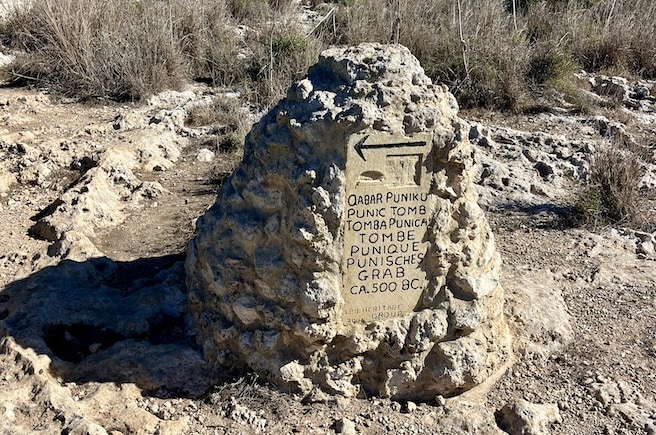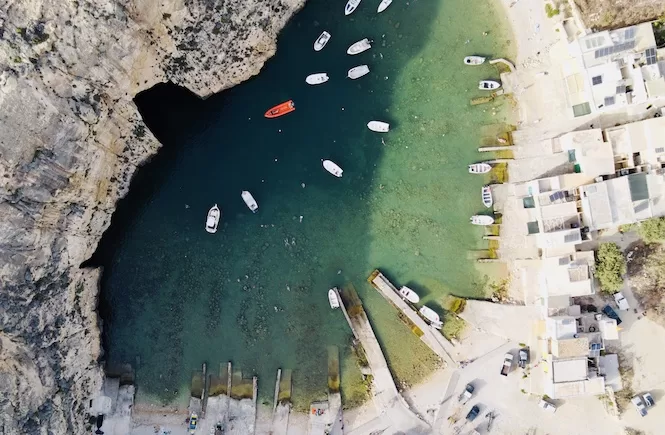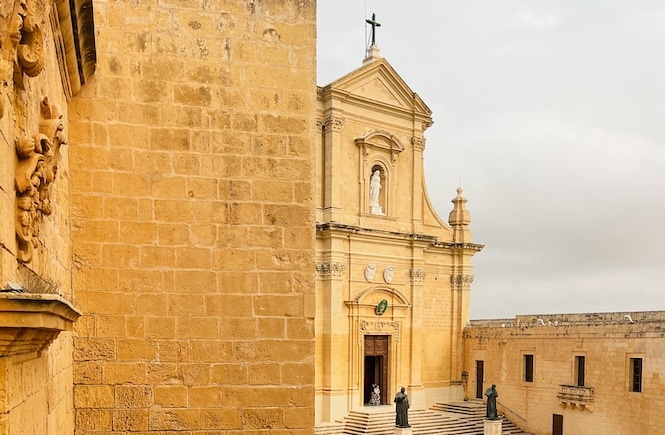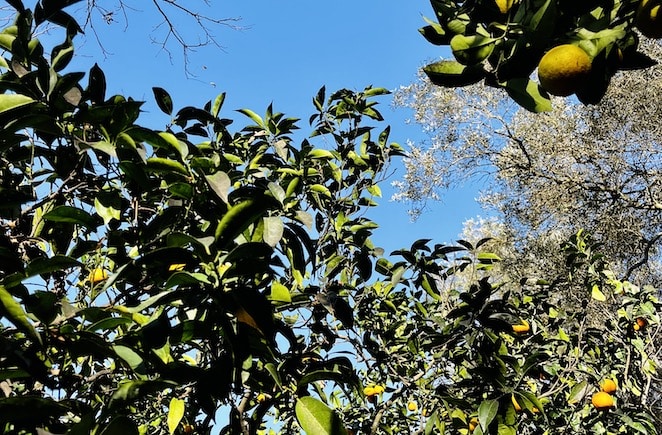Just a quick heads up – some of the links I share on this site are affiliate links. That means if you click on one and make a purchase, I may earn a small commission at no extra cost to you. Your support through these links helps me create valuable content.
The Xemxija Heritage Trail offers a unique insight into Malta’s history. From ancient apiaries and Punic tombs to the timeless beauty of the old Carob tree, this path is a must-see for history enthusiasts. So, let’s discover the historical wonders of the Xemxija Heritage Trail with me.
Is the Xemxija Heritage Trail Worth Visiting?
Definitely! Here’s why:
- Full of archaeological gems: Find Punic tombs, dwelling caves, and ancient apiaries at this small but rich archaeological site.
- Natural beauty: The trail offers scenic views and green landscapes.
- Educational experience: The trail is like a classroom under the sky. Discover how Malta’s culture was shaped by traditional practices such as beekeeping and farming.
- Accessibility: There are bus stops nearby, so you can easily get to this trail.
- Peaceful: Xemxija Heritage Trail doesn’t have crowds. It’s a quiet escape from tourist spots.
- No cost: Free admission.
- Authentic experience: This trail is untouched by commercialism, giving you a true sense of the island’s character.
- For everyone: history buffs and nature lovers alike will enjoy this place.
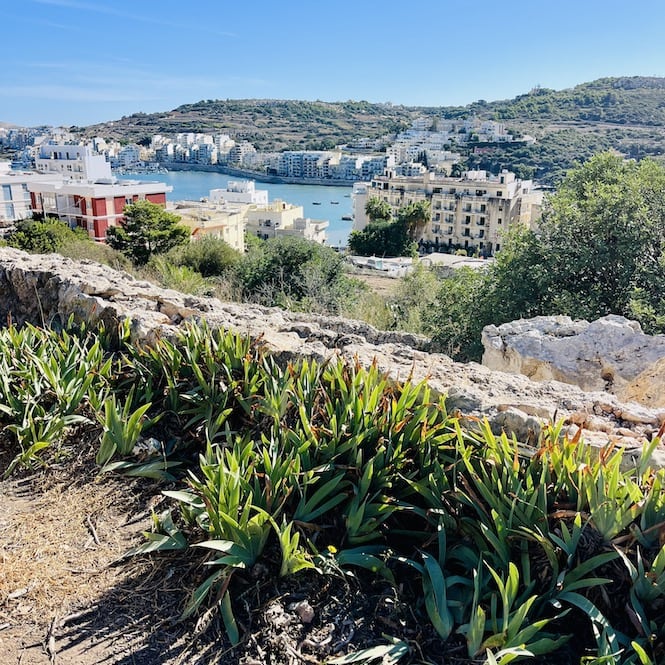
Is the Xemxija Heritage Trail Right For You?
The Xemxija Heritage Trail is a rustic pathway, not tailored for people with mobility issues. It requires walking up a hill and is not suitable for pushchairs or wheelchairs.
How to Get There: Start of the Xemxija Hill Heritage Walk
Getting started on the Xemxija Heritage Trail is straightforward, whether you’re travelling by bus, car, or on foot. First, you need to get to Xemxija, in St. Paul’s Bay. From Xemxija, you can walk to the start of the Xemxija Hill Heritage Walk (click here for the exact location).
By Bus: The trail is near several bus stops. Buses to Xemxija run from various points in Malta to St. Paul’s Bay. From there, you can easily find the trailhead.
By Car: If driving, head towards Xemxija and park nearby. The trail’s starting point is a short walk from the main parking area.
On Foot: For those in Buggibba, a leisurely walk leads directly to the trail. It’s a great way to warm up before the hike.
Getting There:
- Location: link to Google Maps
- Nearest bus stop: Roti in Xemxija, St. Paul’s Bay
- Walking distance from the bus stop: 5 minutes
- Bus frequency: Every 15 minutes or less
- Parking available: Street parking on Triq ir-Ridott. I usually park here, since there is plenty of space.
The trail begins with a 10-minute uphill walk. This quickly rewards you with stunning views of Xemxija and St. Paul’s Bay and the historical sites that await along the Xemxija Heritage Trail.
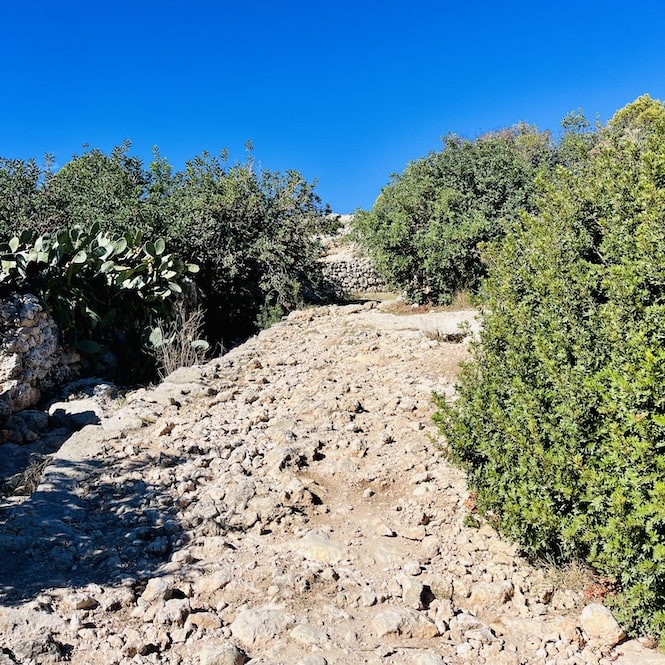
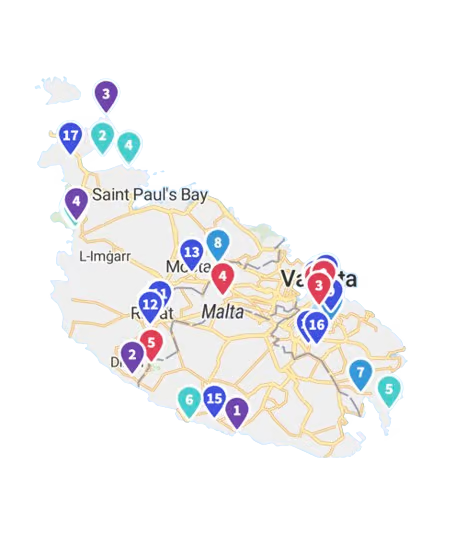
Get a FREE Attractions Map
Planning a trip to Malta, Gozo, or Comino? Get this free interactive map filled with insider tips, Google Maps links, and more.
Key Sites and Attractions along the Xemxija Heritage Trail
Apiaries
Walking along the Xemxija Heritage Trail, you’ll come across ancient apiaries, where Malta’s honey was made. These structures, half-cave, half-built, are nestled into the hillsides. Their design, with arches and large stones, is a work of art. Some think Malta’s name, ‘Melita,’ comes from ‘mel,’ the Latin word for honey, because of these apiaries.
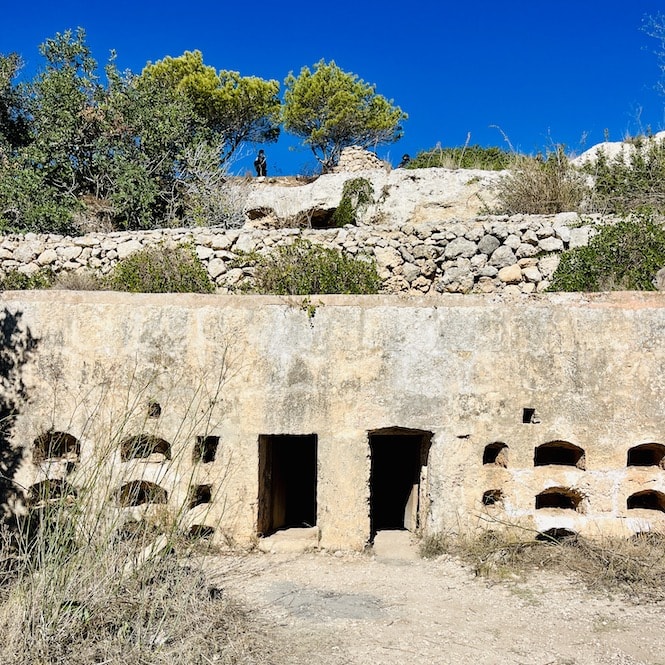
Beekeepers chose the spots for these apiaries very carefully. They needed just the right amount of sunlight and warmth for the bees. Of the four apiaries near the trail, one was destroyed, but now you can see its parts restored. Inside, there’s a beautiful mix of rough and crafted stone. The apiaries have alcoves, each with two stone shelves. Terracotta beehives sit behind each hole, ready for bees.
The Old Carob Tree
This old carob tree is over 1,000 years old and has a wide 7.25-meter circumference. Known for its unique pod-like fruit, carob has been a key part of life on the islands.
By mid-August, the fruit is ready and has fed many animals like goats, sheep, cattle, horses, and even rabbits over the years. People also make syrup from this fruit, called gulepp, which soothes coughs and is still popular today. You can buy locally made carob candy in corner shops.
Even its seeds have special use. They were made into rosary beads and also used for thickening food. The word ‘carat’, used for weighing gold, comes from ‘qirat’, an Arabic word linked to the carob seed.
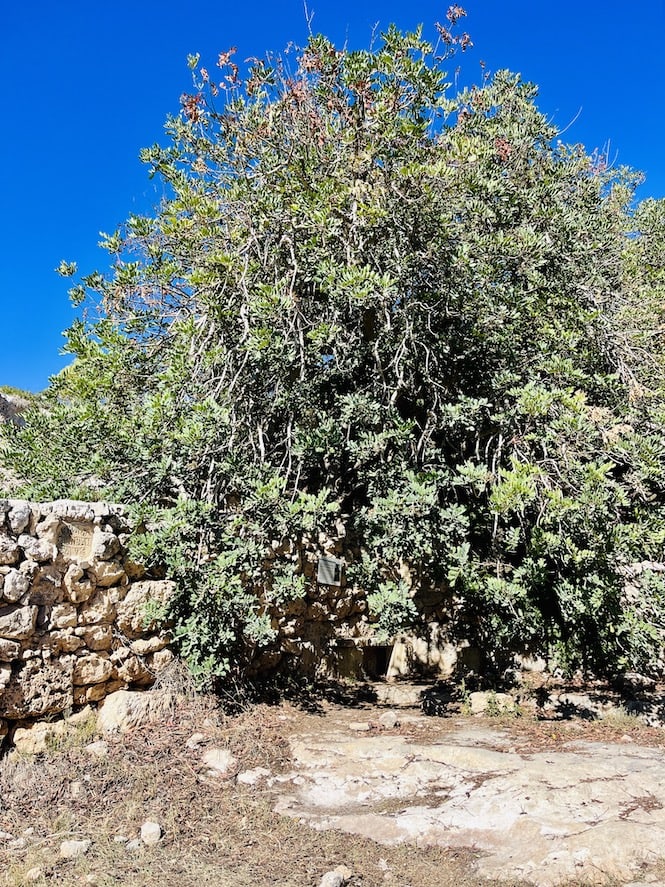
Bees love this tree too, as they feed on its flowers to make dark honey. The tree’s green leaves spread wide, giving lots of shade and adding beauty to the landscape.
If you want to understand Malta’s history well, take a walking tour in Valletta. Look at my guide for the best Valletta walking tours.
Punic Tomb
The Punic Tomb in Xemxija is a rare find, believed to have been used by the Phoenicians and Carthaginians. They might have even transformed older tombs for their own use.
What makes this tomb special is its design. With two apses, one on each side of the entrance, it forms an almost half-circle shape. It’s about 2 meters wide at its widest point, with a flat ceiling 1 meter high and a smooth floor.
Every part of this tomb, from its shape to its size, tells us about the people who built it and the times they lived in it.
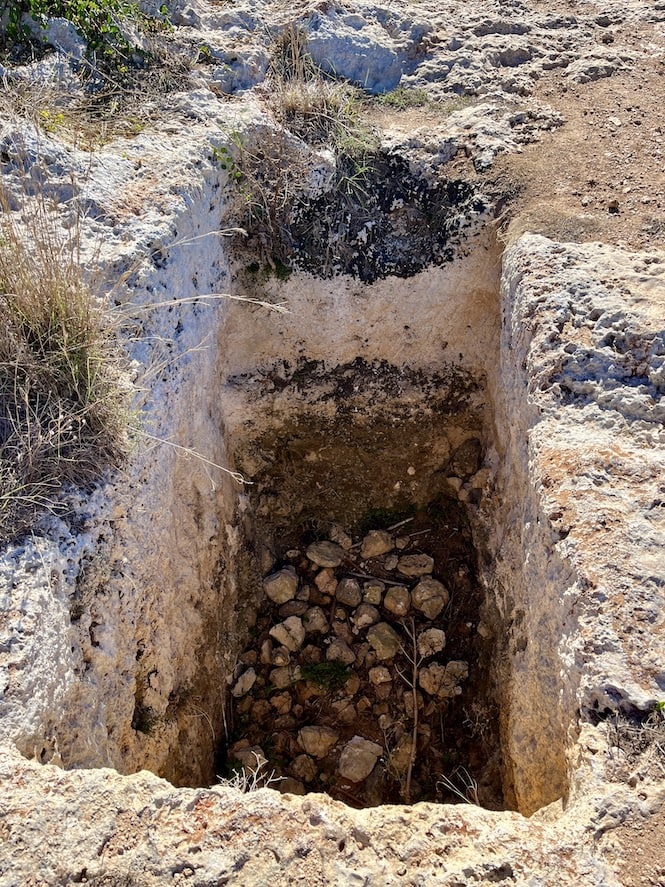
Farmer’s Hut
This reconstructed farmer’s hut is built from the same stones as the original. Next to the hut, you’ll find a stone bench where farmers might have rested. You’ll also find a water duct for collecting rainwater and a trough for animals.
Inside, there’s a special place for an oil lamp and a small alcove. The hut roof was more than just a cover; it was where people dried clothes and stored farm goods like straw, onions, and pumpkins. They even used it to dry tomatoes in the sun. In front of the hut, there’s a half-circle space that probably kept sheep and goats safe.
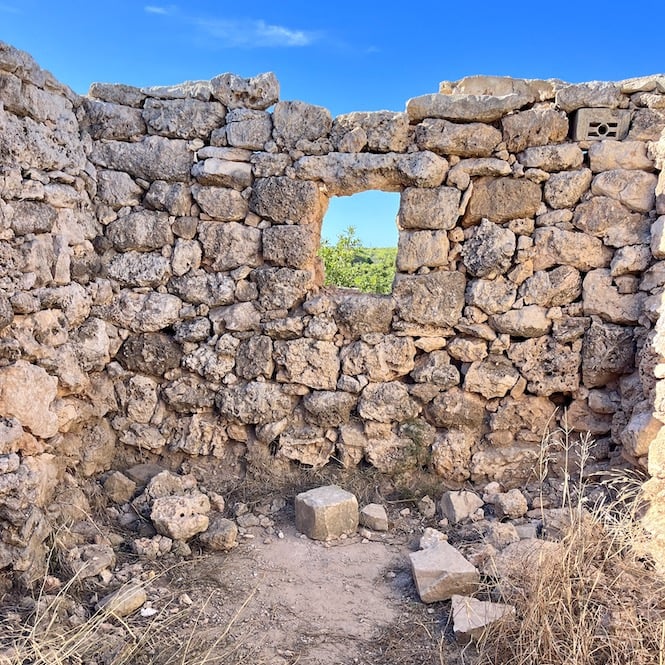
San Pawl il-Baħar Caves
This cave, split into two parts, has roots stretching back to Punic times. People lived here until the 1930s, and the cave was more than a shelter. It was a home.
The cave was cleverly divided into one area for parents, another for kids, and a spot for animals. You can see a channel carved into the rock to bring water into the cave. Imagine the comfort of hay bedding, keeping people warm and dry. Think of meals cooked on a ‘kenur,’ a traditional stone cooker.
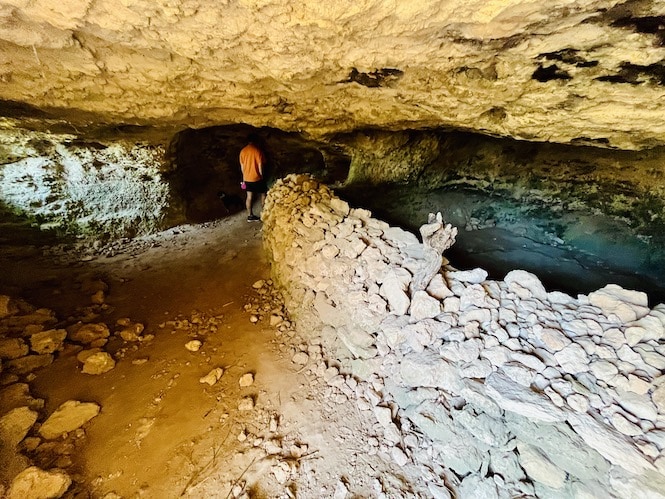
The land around these caves was fertile and well-loved. People farmed here, growing food and living off the land. And when times were tough, during wars, these caves were a safe haven, protecting families from danger.
Neolithic Tombs of Xemxija Heritage Trail
The Neolithic tombs look like holes dug right into the rock. Each tomb is a small cave in itself, with a modest entrance leading to a chamber inside. Imagine the people who made them over 5,000 years ago.
These tombs are important for understanding Maltese prehistory. Some tombs have lobed shapes, much like the layouts of Malta’s Megalithic temples. It makes you wonder about the connections between these sites.
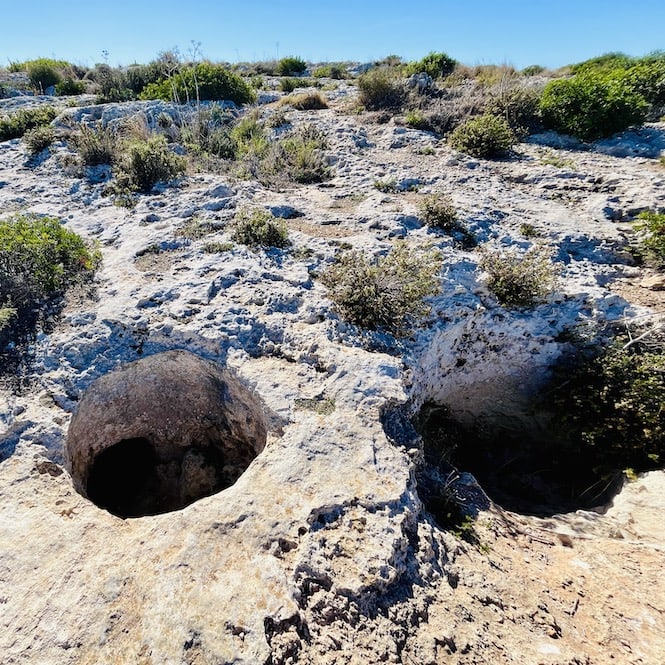
I hope you enjoyed this post and planning to visit the Xemxija Heritage Trail. It’s a chance to feel history, breathe in the past, and understand an ancient culture.
If you’re a history buff, you’ll also love my other guides! Check out my guides to UNESCO sites, Valletta, Mdina, the Three Cities, and the top historical places in Malta. They’re perfect for exploring Malta’s rich past.
Have questions about your Malta trip? Join my FREE private Facebook group, Malta Travel Tips, where you can find helpful resources and connect with fellow travellers!

